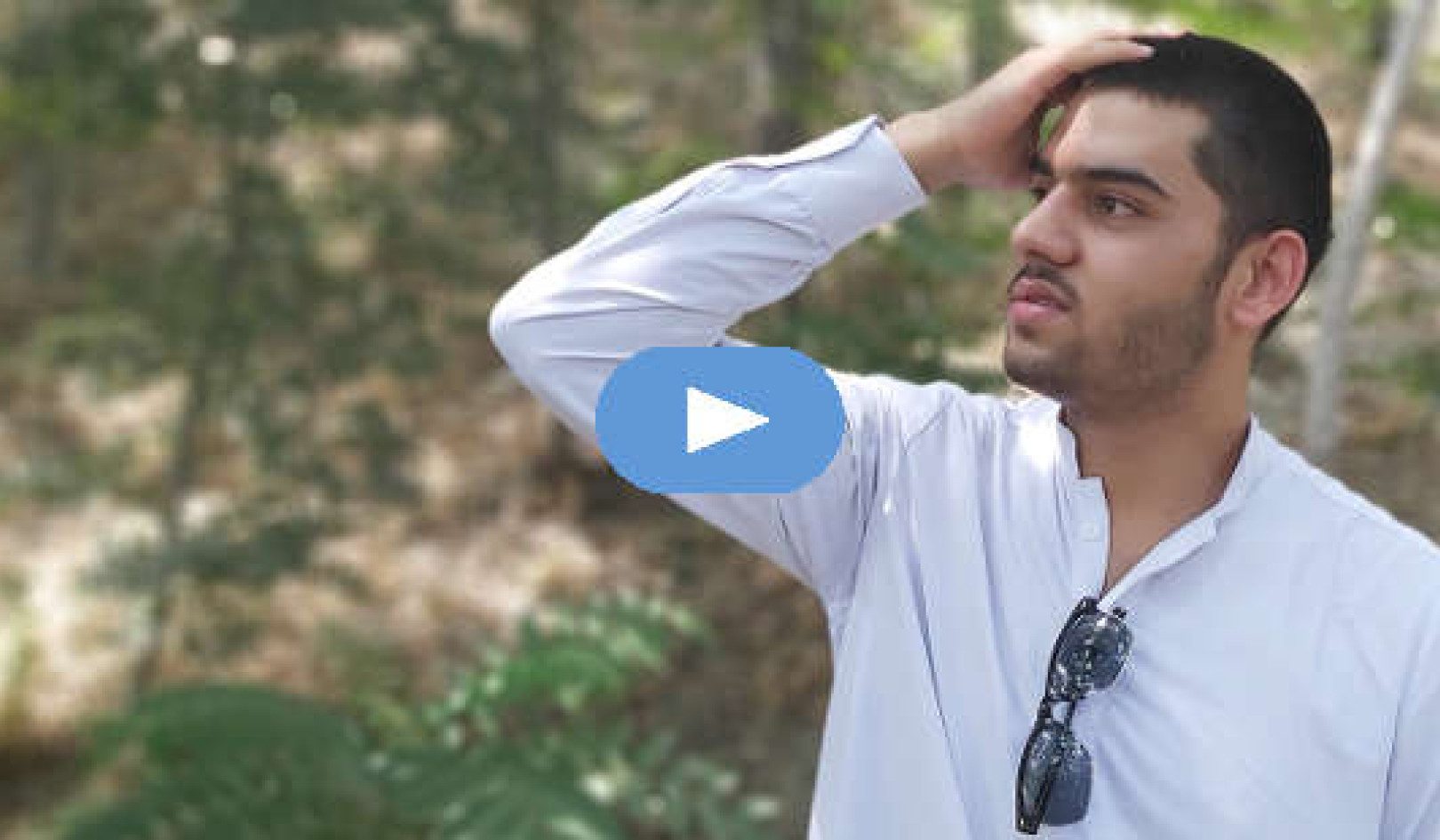
Don’t drive into the tunnel ... The dog’s going to bite ... Patients have described their phobias to me as walking around with the devil on their shoulder or a voice inside their head that just won’t stop. Whether temporarily self-defeating or utterly crippling, phobias can get hold of us and seem to take over.
Your neighbor’s sweet dog turns into a dangerous monster that’s going to turn on you and bite. The short plane ride is going to turn into an epic crash. The elevator’s going to snap off its cables. The spider in the corner is going to leap off the wall and attack. The car is going to veer left and into oncoming traffic—even though you’ve got both hands on the wheel and your eyes on the road. And to certain poor souls, germs are everywhere, sickness is everywhere, and they have no choice but to wear gloves wherever they go, even in the heat of summer.
A phobic response is as an irrational, persistent fear of an object, a particular situation, or a type of circumstance. It’s paralyzing, overwhelming, and self-perpetuating.
The Consequences of Phobias
Phobias cause a huge amount of anxiety—and they’re incredibly common. They cause people to drastically change their daily routines, scale back plans, ambitions, and goals. They affect everything, from our jobs to our relationships, from what we eat and how we sleep to how often we get sick.
The stress they can produce is crippling—but so, too, can be the sense of hopelessness they generate. When they go untreated, the resulting stress and anxiety can become so severe that additional psychiatric disorders can occur, such as bouts of heavy depression, other forms of anxiety, and, of course, substance abuse. Having just experienced a flash of utter terror, it’s entirely common to want to have a drink. But that in itself can magnify into a pattern, until just the thought of having to do something is enough to trigger a thirst.
I’ve treated many, many patients successfully for all sorts of phobias. I’ve seen some remarkable ones: germophobia, a phobia of getting sick during flu season, cockroach phobia (big in New York City), cat phobia, pigeon phobia, a phobia of catching a foot condition from trying on shoes in a shoe store. They’re treatable because phobias don’t necessarily need medication or long commitments to deep analytical discussions in talk therapy (like the “tell me about when you were five” approach to being afraid of driving.) But phobias do need treatment. To escape a phobia requires careful and deliberate work. Often, the results-oriented, matter-of-fact, collaborative LPA technique (Learning, Philosophizing, and Action) works extremely well.
Everyone’s phobia is different. There’s no one specific, single magic bullet that will make it go away. But usually, there is a results-oriented way to make it stop. What I have found works best is a combination of relaxation techniques, systematic desensitization and gradual, guided exposure—what you might call “reciprocal inhibition”—in which we counter the anxiety and stress caused by your phobic thoughts with pleasant visualizations. That’s the LPA framework. Within that, the specifics depend entirely on the individual and the nature of the phobia.
Defusing the Fear
LPA involves working first in vitro (in your head), and then in vivo (in real life). With phobias, the in vitro phase involves gaining an understanding of the nature of the phobia: learning about it, then examining it from different points of view, philosophizing about it, considering it from different angles. Then we practice systematically desensitizing you with what I call reciprocal inhibition. This is a fancy term for the act of pairing the source of your anxiety with some kind of reaction that actually reduces that anxiety, therefore disconnecting the source from its effect on you.
The in vivo phase involves exposure to what scares you. And that may happen in gradual, even infinitesimal increments. Sometimes the work produces a breakthrough that seems sudden, but is not. At the same time, or in whatever sequence the patient is comfortable with, he or she is also practicing on their own.
If you are involved in your own improvement, it’s a great feeling—you’re investing time and effort in yourself. You are taking control of an issue that has a life of its own, involved and committed to a process that will be successful. In fact, it’s a rare case in which someone doesn’t improve because success in treatment depends far more on the patient’s own efforts than you’ve been led to believe.
Here’s the truth: The more motivated the patient, the better the outcome. Perhaps, if we acknowledged that, our overreliance on paternalistic talk therapy, with its endless second-guessing and analysis, and on pharmaceuticals that all too often wreak havoc on brain chemistry and have all manner of unfortunate side effects, would be far less prevalent. Instead, we’d tackle many of our problems with specific, goal-oriented, targeted, short-term solutions, using the powers within ourselves, which is what this book is all about: feeling better faster.
A Gradual Process
What I do with LPA is gradually, step by step and at a pace that is comfortable with the patient, work to defuse the phobia. It is not a complicated method. It mimics the way we learn, as children, not to be afraid of something: by looking at it, examining it, deciding it’s not really that scary at all, and then just accepting it as part of life.
Here’s a glimpse of the things I might cover with a patient. This is generic; each approach is tailored to each individual, but this is the general framework of how it works.
Relax
We start with some relaxation exercises to settle the mind and calm the nerves. That’s important; you can’t be doing this kind of work in an agitated state.
Learn
In the learning phase, I ask different types of questions. They’re all geared to getting a general picture of a patient and his or her phobia. What often happens is patients gain insights as they answer the questions.
Among the questions I might ask:
- What’s your fear?
- How long have you felt this way?
- Does this fear have a physical effect on you? For instance, does it make your chest feel tight or your stomach knot up? Do you start sweating, does your heart beat faster? Do you feel an urge to go to the bathroom? Have you ever spontaneously eliminated during phobic anxiety?
- Does this fear have an impact on the way you act? Does it make you want to run away, or cause you to make excuses for your thoughts or behaviors?
- Did anyone else in your family have this phobia or a similar fear?
- Growing up, did you feel a lot of anxiety and stress in the house? Or did home feel safe and secure? Do you think you might have been somehow taught to fear certain things, and if so, which might you have been taught to fear?
- What about the people around you, your friends, people you met? Were you taught that people were essentially good, reliable, and trustworthy?
- What about things such as machines? Were you taught they were reliable and safe? And what about animals or insects? Did anything happen as you were growing up that made you believe they were unsafe and dangerous?
- What’s your relationship with your family like now?
- How do you feel about yourself? Does the phobia affect your self-esteem, slow down your career advancement, hinder your social life, or affect your family and friends?
- These questions are a guide and not part of a rigid formula, and can vary and be expanded or contracted based on some of the answers.
Philosophize
As we start the philosophizing phase, we look back at your answers, and to the discussion that those answers generated. From there, we start painting a picture of you and your fears.
The idea is to embark on a very basic, simple change of perspective, which will be a big step toward how you think about yourself and your phobia. It’s a way of expanding your point of view about what’s bothering you and a different way to think about things. We talk about any possible trends or patterns, and we might talk about what it’s like to live with this particular fear: how it affects your daily life, your routines, your relationships, your choices.
Perhaps you’ll remember something about the way you grew up that made you more anxious as a child. Maybe some part of you actually feels more comfortable with a certain level of stress—you’ve become so accustomed to it that it feels like a part of you. Or maybe it turns out that certain things trigger it the same way, such as being late, having a messy house, or misplacing something. It could be anything (and I’ve seen nearly everything).
Or perhaps you grew up thinking that anxiety was normal, which actually is a common characteristic for many phobia patients: they learned to be phobic. That’s a faulty premise, and it’s faulty learning, but it was learning, nonetheless. And once you know that, you can start to unlearn it.
The idea is to talk about it, and see what comes up, but not forever; not for months; not to the point where we’re ignoring the reason you came in. We’re not going to start trying to fix everything. We’re only going to fix your phobia.
So I might start doing what is another part of philosophizing, what I call the possible versus probable scenario. Most anxieties, panic, fears, phobias, and apprehensions are not only caused by flawed learning, they also cause flawed reasoning.
Consider these possibilities and probabilities:
It’s certainly possible for the elevator to crash, or the plane to nosedive, or the bridge to collapse, but is it probable?
There is certainly a possibility that the world might end tonight while you sleep, but is it probably going to happen?
That mosquito on the wall may indeed turn around and somehow manage to bite you before you smash it with your newspaper, but will it?
The old cat that is napping in a sunny spot on your friend’s bed as you sit in your friend’s living room and have tea may possibly wake up, go directly to you, and scratch you hard. But it’s sleeping, and it’s been sleeping for hours. So do you think it’s actually going to get up from its warm spot in the sunshine, see that you in particular are in the house, and unsheathe its claws to attack you?
Probably not.
Once you start considering the odds, you can start dialing back your fear.
What Are The Chances?
Doing this kind of homework and working out this kind of thought process has incredible value to the person doing it. You’re facing the subject of your fear, you’re taking it upon yourself to think rationally and learn something about your fear, and you are probably going to find that it is really not that bad.
I’ve had my patients research statistics on everything from insect bites to car crashes to dog attacks to building collapses to snakebites to elevator mishaps—and then work on extrapolating the probability. Nearly every time, they are pleasantly surprised, and that surprise turns to relief.
Nothing like real information to quell a rumor, right? Admittedly, there are those few who want help but focus on the “yes, buts” to almost any new idea. However, with a bit more time and motivation, help is waiting for them.
One woman said to me, “It’s amazing what a little dose of reality can do when you think it through without an emotional charge.” The phobic response in based on a type of all-or-nothing thinking, for example:
The dog will bite me, so if I stay away from the dog, it won’t bite me.
As we develop a new kind of thinking, a new perspective develops:
Well, it does seem like although some (though very few) dogs bite, and some dogs seem a bit difficult to deal with, most dogs are gentle, and completely enjoy being around people. They even like people. Given the chance, they’ll wag their tails and lick your hand.
As this new thinking takes root, the concept of possibilities and probabilities increases, and a broader view of the phobia occurs.
With a phobia, the terrible possibilities run like a tape loop in your head. Without anyone countering them, they just keep looping and replaying. But instead, stop and ask yourself: what are the chances? What are the chances this happens? That’s all it takes.
There are many ways to ask yourself this. One approach is to list the pros and cons of the very thing you’re afraid of, such as an airplane. Another is to carefully examine the positives and negatives of giving up your phobia. Forecast the outcome for yourself: If I give up this fear, what will be easier, and what will be harder?
Chances are, as you ask yourself these questions, there will be a reflexive response going on, which I call the “Yes, But...” response. Work on keeping that Yes, But out of your own internal conversation with yourself. Consider that the voice of a very negative non-friend, who is not on your side. Give it an identity of sorts.
One patient of mine even had a nickname for his. He called it his “pinhead,” a voice that was always trying to cast doubts and negative feelings when he was doing his best to work his way out of them. “It’s as if this pinhead of a voice wants me to feel bad,” he said. “But I’m not going to let him.”
What often happens in this philosophizing phase is that reason takes over. And in some cases, it’s a tremendous surprise. “Is that true?” a patient once exclaimed, as if he had just suddenly discovered an incredible secret. It was as if he’d just realized he held the key to unlocking this trap he’d been in for years. The key was common sense.
Copyright 2018 by Dr. Robert London.
Published by Kettlehole Publishing, LLC
Article Source
Find Freedom Fast: Short-Term Therapy That Works
by Robert T. London M.D. Say Goodbye to Anxiety, Phobias, PTSD, and Insomnia. Find Freedom Fast is a revolutionary, 21st-century book that demonstrates how to quickly manage commonly seen mental health problems like anxiety, phobias, PTSD, and insomnia with less long-term therapy and fewer or no medications.
Say Goodbye to Anxiety, Phobias, PTSD, and Insomnia. Find Freedom Fast is a revolutionary, 21st-century book that demonstrates how to quickly manage commonly seen mental health problems like anxiety, phobias, PTSD, and insomnia with less long-term therapy and fewer or no medications.
Click here for more info and/or to order this paperback book. Also available in a Kindle edition.
About the Author
 Dr. London has been a practicing physician/psychiatrist for four decades. For 20 years, he developed and ran the short-term psychotherapy unit at the NYU Langone Medical Center, where he specialized and developed numerous short-term cognitive therapy techniques. He also offers his expertise as a consulting psychiatrist. In the 1970s, Dr. London was host of his own consumer-oriented health care radio program, which was syndicated nationally. In the 1980s, he created “Evening with the Doctors,” a three-hour town hall style meeting for nonmedical audiences—the forerunner to today’s TV show “The Doctors.” For more info, visit www.findfreedomfast.com
Dr. London has been a practicing physician/psychiatrist for four decades. For 20 years, he developed and ran the short-term psychotherapy unit at the NYU Langone Medical Center, where he specialized and developed numerous short-term cognitive therapy techniques. He also offers his expertise as a consulting psychiatrist. In the 1970s, Dr. London was host of his own consumer-oriented health care radio program, which was syndicated nationally. In the 1980s, he created “Evening with the Doctors,” a three-hour town hall style meeting for nonmedical audiences—the forerunner to today’s TV show “The Doctors.” For more info, visit www.findfreedomfast.com
Related Books
at InnerSelf Market and Amazon























